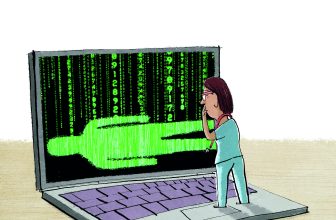
Examiners’ influence on the measured active and passive extension deficit in finger joints affected by Dupuytren disease | BMC Medical Research Methodology
In patients with Dupuytren disease, ROM is the most common physical measurement used to classify disease severity and treatment efficacy [4]. The use of a goniometer to measure the joint extension deficit is regarded as objective and reliable [12]. In the literature, outcome measure in Dupuytren disease is reported as passive and/or active extension deficit; however a significant number of studies do not state how the extension deficit is measured [12]. This inconsistency in measurement methodology makes comparison between studies difficult [11].
In our study we measured both PED and AED in finger joint contractures caused by Dupuytren disease. The measurements were performed by three examiners (experienced hand therapists at the same orthopedic department). The AED-adjusted mean difference between AED and PED differed significantly among the three examiners. In most recent studies regarding treatment outcome in Dupuytren disease PED is used as the primary outcome measure [9, 10]. However, our study suggests that this measurement may be examiner-dependent and we believe that measurement of PED includes an additional examiner-related source of error compared to AED. This may be due to individual variations in the amount of pressure put on the digit when measuring passive extension. Although the measurements in this study were performed by three experienced hand therapists according to a standardized protocol, potential variation related to the effect of dynamism may not have been completely eliminated. Active extension may therefore be less examiner-dependent, and also may be a better illustrator of functional gain. Measuring active extension may also minimize the effect of dynamism [19].
Broekstra et al. [17] examined the inter-observer agreement between two examiners measuring total PED in joint contractures in patients with Dupuytren disease. The study reports a high inter-observer agreement, although the results varied according to examined finger, and before study start the two examiners evaluated 50 patients together to reach consensus in measurements. In our study, although the examiners discussed measurement technique they did not measure joints together before study start, which may explain the variability in measurements. This design may however increase the generalizability of our results, since we have evaluated the hand therapists in their daily clinical practice. A previous study by Engstrand et al. [16] in which several examiners measured joint ROM in the same patients with Dupuytren disease who had undergone surgery during the preceding year has shown that measurement of AED also varies among examiners, both in the MCP and PIP joints. Most previous studies that have examined reliability of finger joint ROM measurements were done on individuals without joint contracture caused by Dupuytren disease; we have not found other studies that have investigated reliability of joint ROM measurements in patients with Dupuytren disease prior to treatment.
One of the limitations of our study is the non-randomized allocation of patients to the examiners. However, the allocation was done without knowledge of the identity of the examining therapist that would be present at the particular treatment session. Moreover, no differences were found in any other patient characteristic. An alternative study design would have been to have all examiners measure the same patients in random order, in which case differences in AED and in PED between examiners could be analyzed. However, our results show that the difference between measured active and passive extension was similar in relation to all other variables (joint, finger, gender, and age) except for the identity of the examiner. Another limitation of our study is that all measurements were done on patients before treatment with collagenase injection. Measurements of contractures after treatment, or in patients undergoing surgical fasciectomy may differ, which may limit generalizability. However, at the study center collagenase injection was the first-line treatment for patients with Dupuytren joint contractures requiring treatment during the study period; few patients were treated with surgical fasciectomy whereas percutaneous needle fasciotomy is not used at the center.



